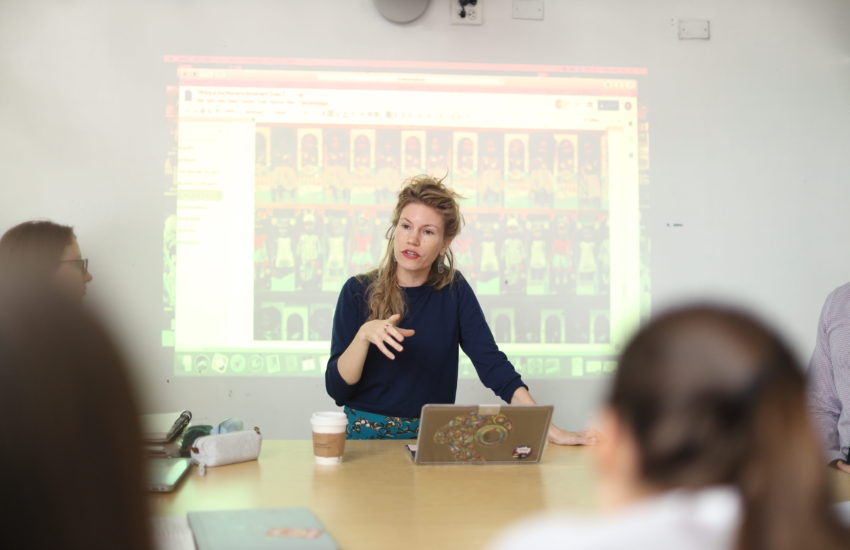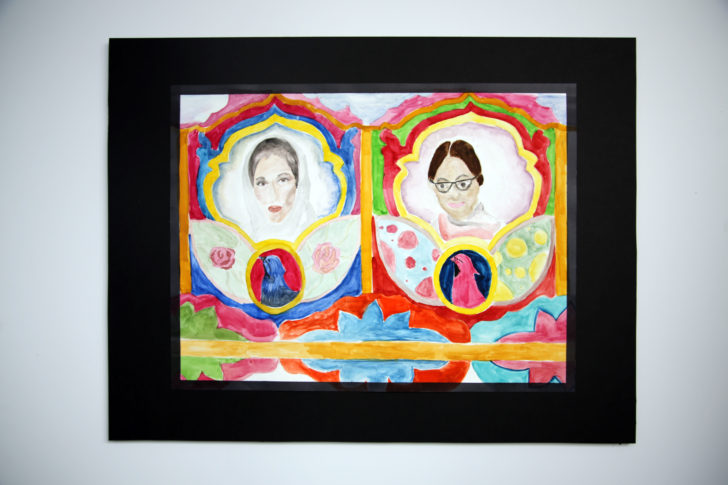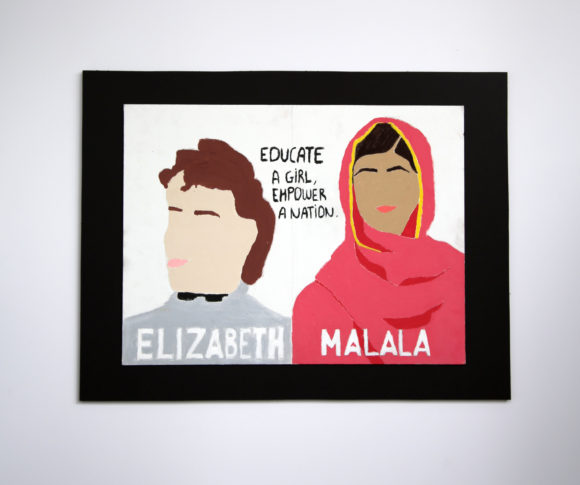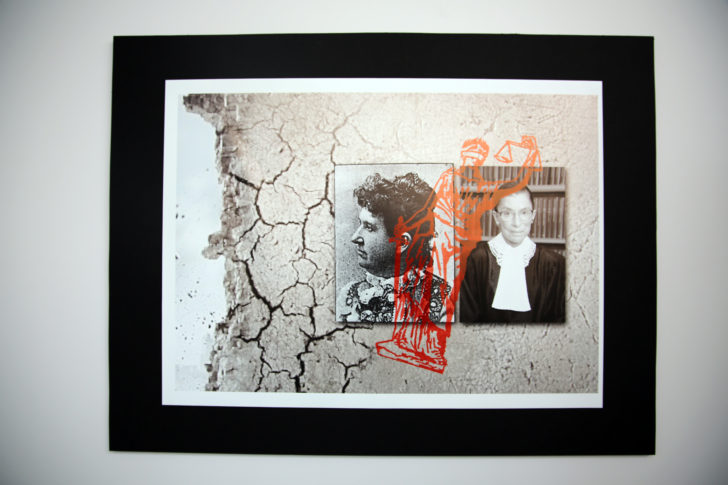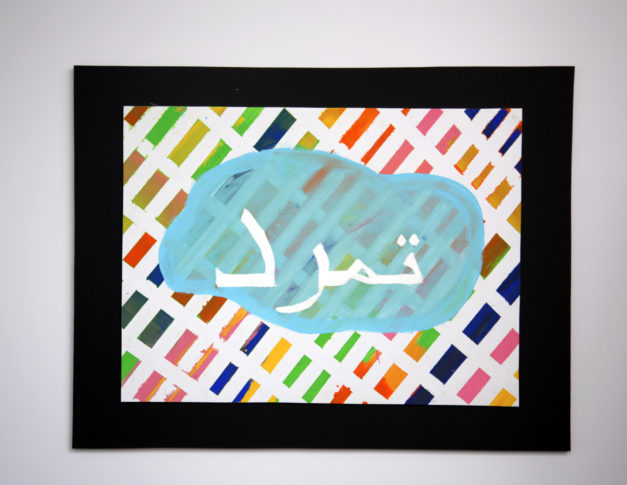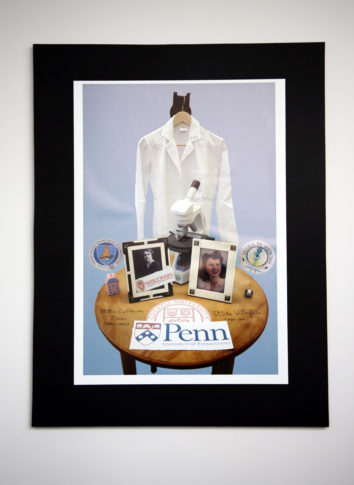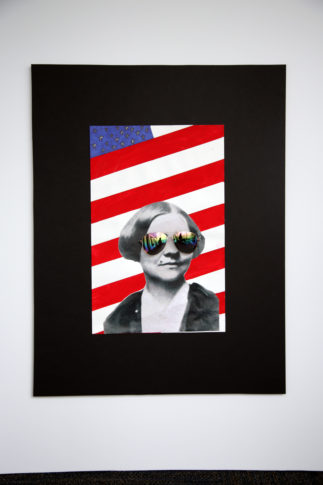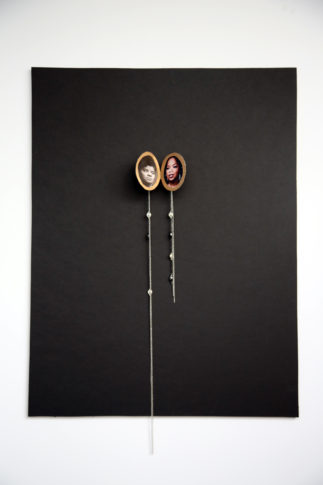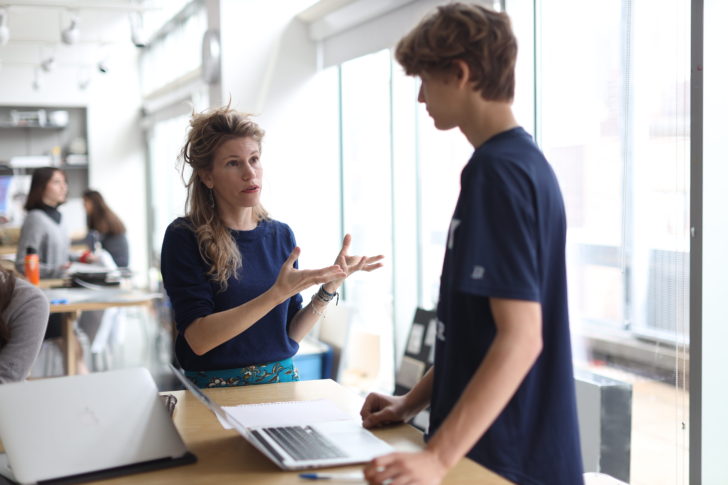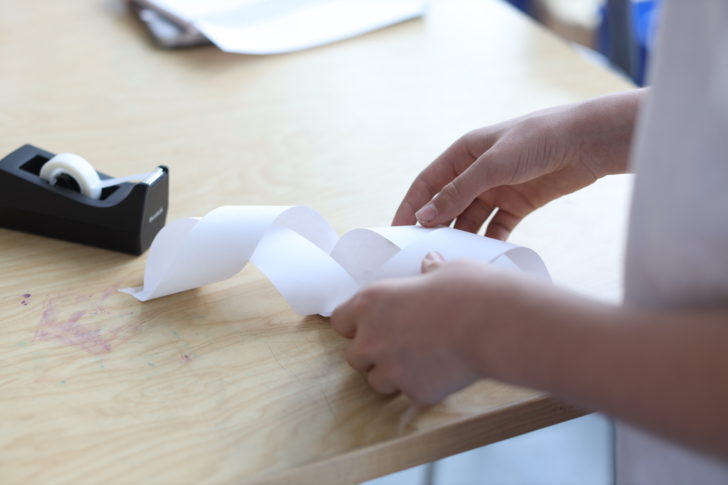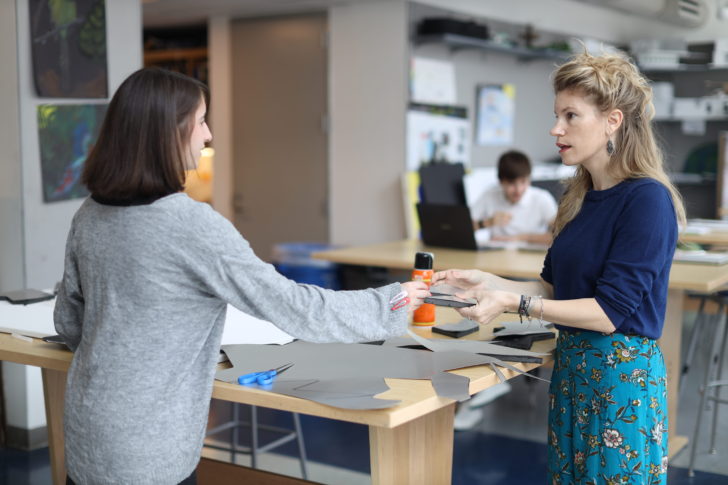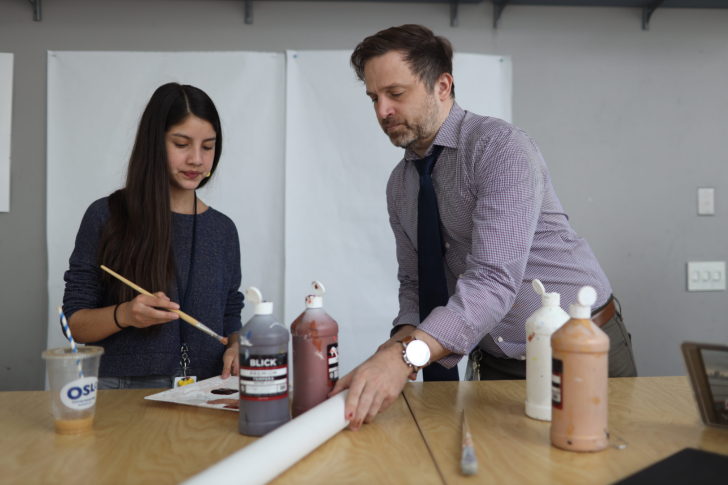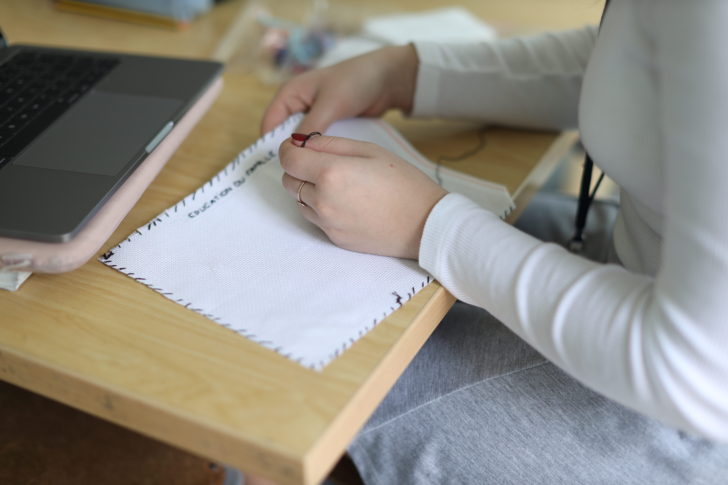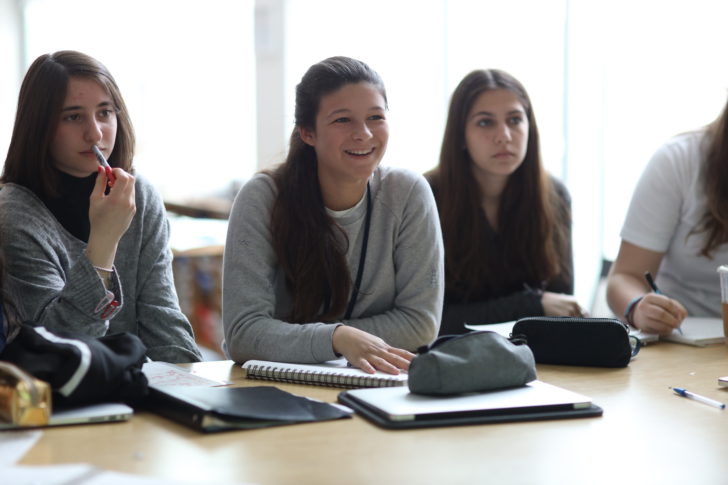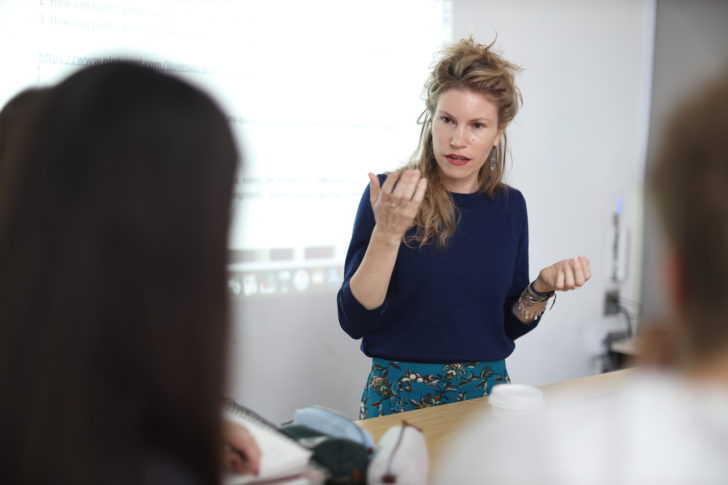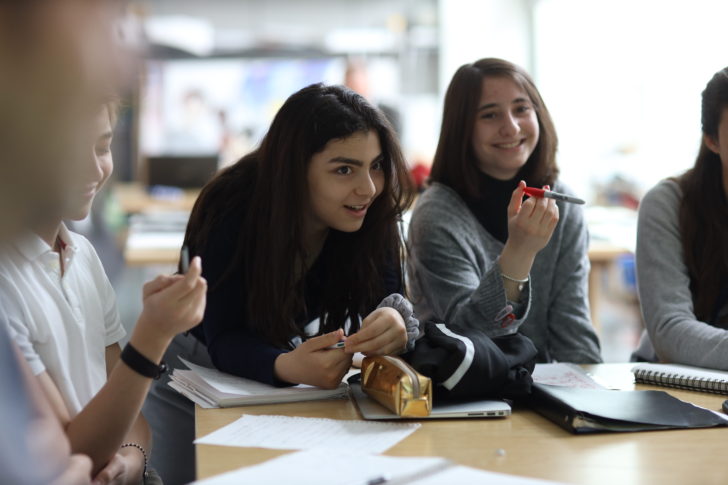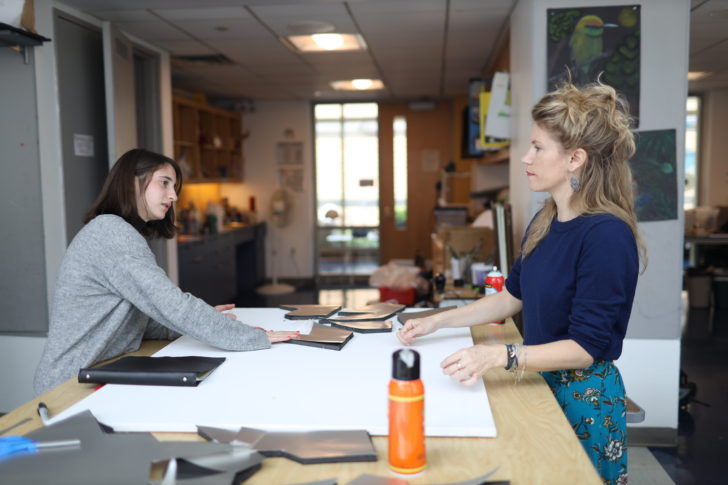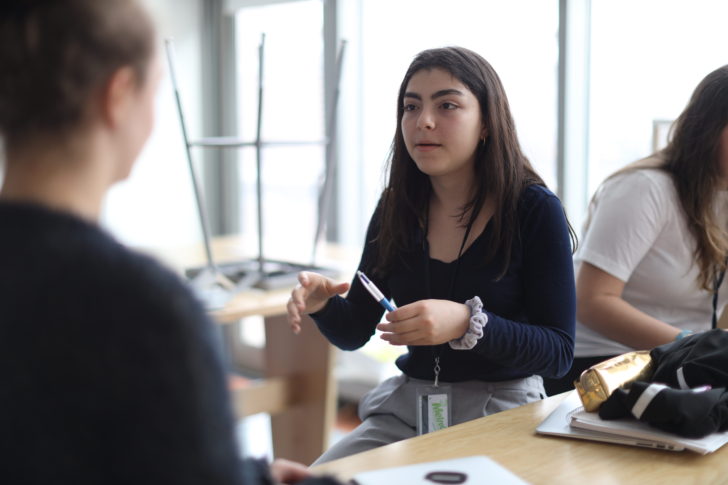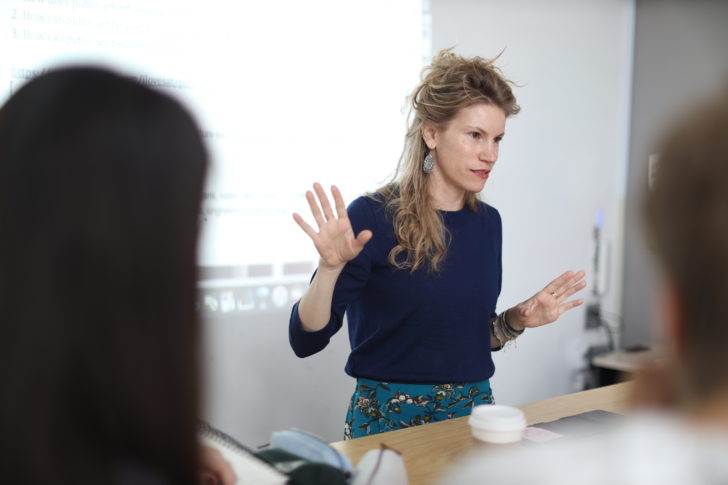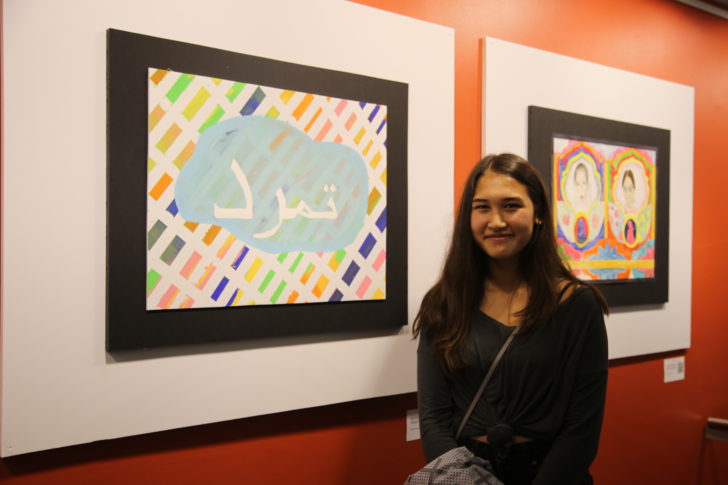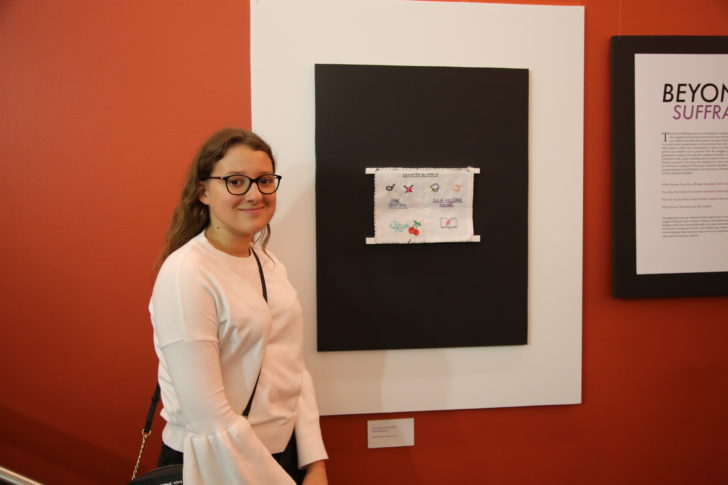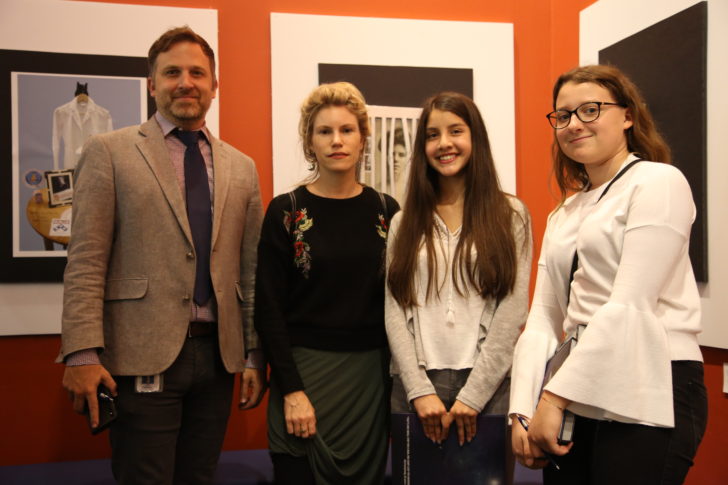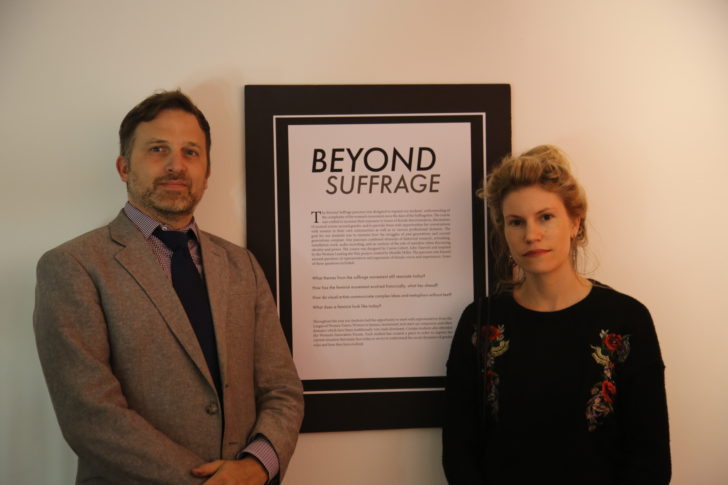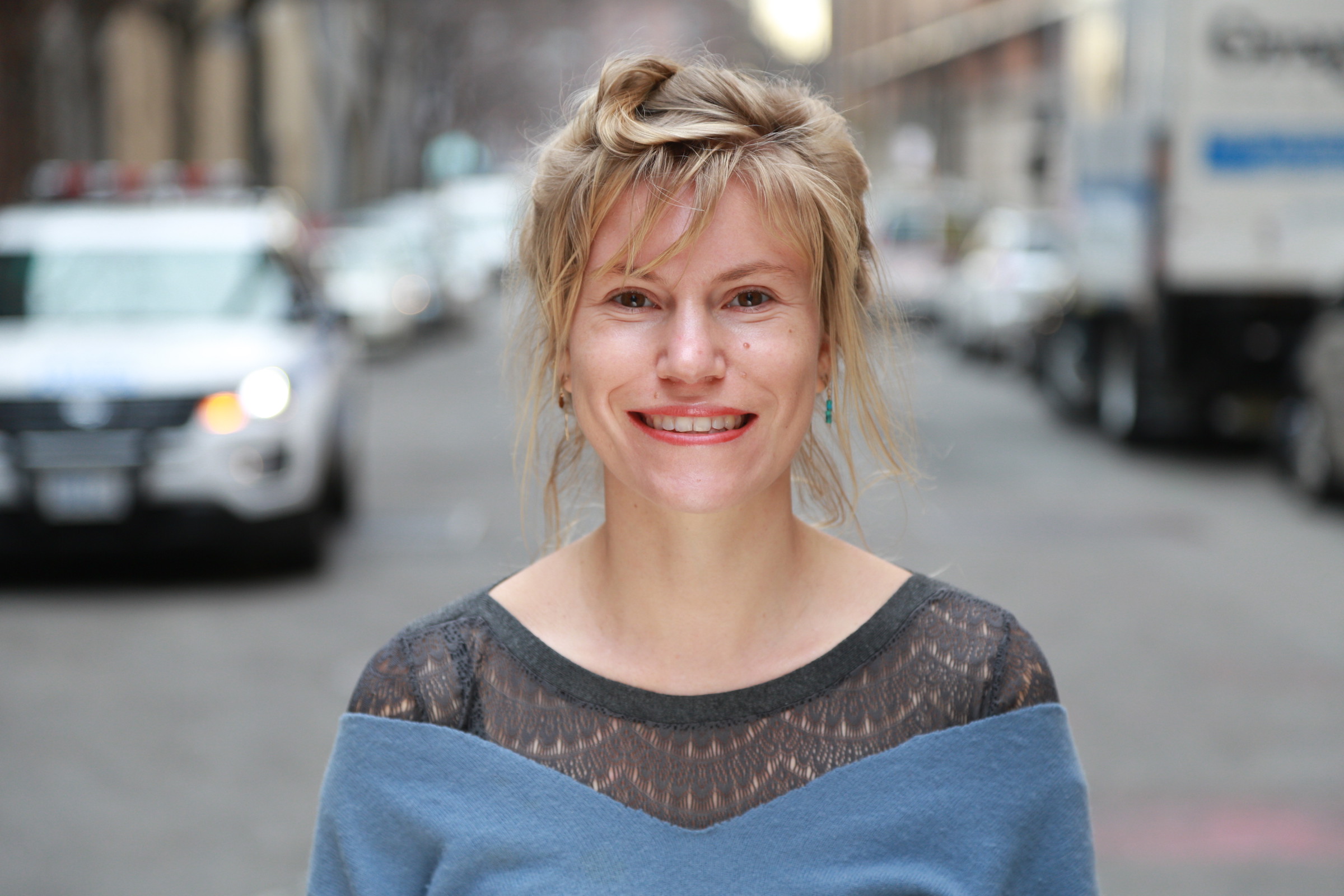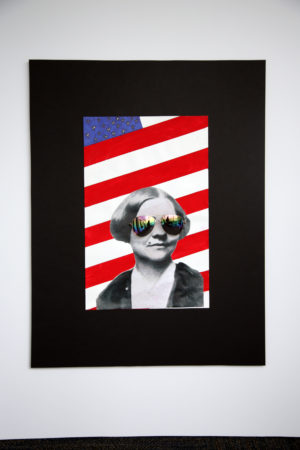 Monday afternoon saw the Lycée’s downstairs gallery filled with art lovers—all eager to view the culmination of Y9 students’ “Beyond Suffrage” Art/History Parcours. In the class, students worked to create a visual art and audio installation, which puts family research and interviews in conversation with larger societal conversations around the history of women’s rights.
Monday afternoon saw the Lycée’s downstairs gallery filled with art lovers—all eager to view the culmination of Y9 students’ “Beyond Suffrage” Art/History Parcours. In the class, students worked to create a visual art and audio installation, which puts family research and interviews in conversation with larger societal conversations around the history of women’s rights.
Designed and taught by Carine Gibert and John Tasevoli, the “Beyond Suffrage” Parcours draws inspiration from Primary Art teacher Mireille Miller’s national suffrage project, Women Leading the Way, which examines the history of women’s right to vote. The project is based on the realization that many women who contributed significantly to history have largely been forgotten or ignored. Since its start in 2017, Women Leading the Way has galvanized teachers and students across the country in its mission to set the historical record straight.
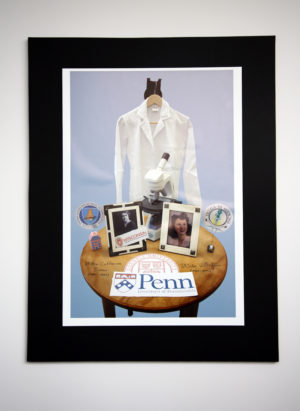 As a sort of next iteration, in order to carry these ideas into contemporary life, Lycée Y9 students are now asking: What happened to the Women’s Movement after winning the right to vote? What legal battles still had to be fought? What social norms still had to be changed? And what is the status of women’s rights today?
As a sort of next iteration, in order to carry these ideas into contemporary life, Lycée Y9 students are now asking: What happened to the Women’s Movement after winning the right to vote? What legal battles still had to be fought? What social norms still had to be changed? And what is the status of women’s rights today?
Paloma, a Y9 student who wanted to learn more about her Puerto Rican grandmother, discovered that her grandmother was one of the first women from the island to build a successful career in microbiology. This inspired Paloma to research the history of women in the field, which led her to discover Alice Catherine Evans, who, in the early 1900s, was one of the only female microbiologists to work for the Department of Agriculture. Paloma created a collage in homage to the two pioneering women, complete with microscopes and lab coats to celebrate women in science.
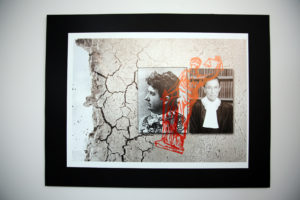 Another Y9 student, Nora, chose Ruth Bader Ginsburg and Ada Kepley (the first American woman to graduate from law school). Nora depicted the two figures against a chipping wall to represent the walls they have “broken” down.
Another Y9 student, Nora, chose Ruth Bader Ginsburg and Ada Kepley (the first American woman to graduate from law school). Nora depicted the two figures against a chipping wall to represent the walls they have “broken” down.
“I’d love to be a lawyer,” Nora explained the decisions behind her artwork. “The graffiti of lady justice served as a tool to tie both women together; both of them have the pursuit of justice in common, because they are lawyers but also because they are women in a male-dominated field.”
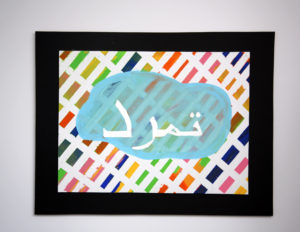 Further along the wall, Alexine, another Y9 student, chose to investigate the 1940s women’s liberation movement in Egypt, using the lens of contemporary visual artist and muralist Maya Hayuk to bring new light to the historic Egyptian feminist Doria Shafik’s activism. And Laina, whose female relatives are part of the fight to protect indigenous rights around the farming of coca in Colombia and Bogota, constructed a totem to honor the native elder Aida Quilcué. Other feminist figures who appeared in the show included Gloria Steinem, Malala and Oprah Winfrey.
Further along the wall, Alexine, another Y9 student, chose to investigate the 1940s women’s liberation movement in Egypt, using the lens of contemporary visual artist and muralist Maya Hayuk to bring new light to the historic Egyptian feminist Doria Shafik’s activism. And Laina, whose female relatives are part of the fight to protect indigenous rights around the farming of coca in Colombia and Bogota, constructed a totem to honor the native elder Aida Quilcué. Other feminist figures who appeared in the show included Gloria Steinem, Malala and Oprah Winfrey.
After numerous class activities and discussions of what feminism looks like today, a group of students attended the Women in Innovation Forum at Parsons (a networking and idea-sharing event for women in male-dominated fields, such as finance), and they heard from a representative of the League of Women Voters (a civic organization that helps women take a larger role in public affairs). Students also learned about the historical background behind #MeToo, women in the workplace, equal pay, balancing motherhood and professionalism, and the importance of intersectionality.
Their artworks will be on display in the gallery until the end of the school year:

About the Author :
Carine Gibert is a graduate of the Frankfurt International School in Germany and the Università Commerciale Luigi Bocconi in Italy where she obtained a degree in economics and management of Art, Culture, and Communication. After working in cultural management in Paris and Amsterdam, she moved to the US in 2008 to teach world history and geography in Michigan and New York City. Since graduating from Teachers College at Columbia University in 2010 with a masters in social studies education, she has focused on civic and sustainability education in Phnom Penh, Cambodia and Boulder, Colorado.

